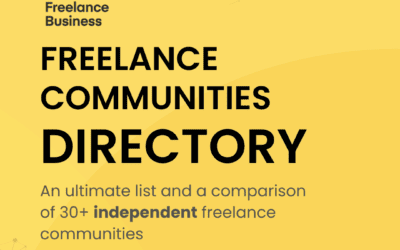If you are a hiring manager or a small business owner, you should be aware of how many benefits freelancers and other contingent workers can bring to your team. Enjoying the maximum of what they have to offer however requires you to be strategic and build a positive relationship with external workers. In this article, we will share five strategies to make them feel they are an integral part of your team and to maximise freelancer engagement.
1. Adjust the scope
What is the main difference between contingent workers and employees? Most often it is their scope. Freelancers often join bigger teams to work on a defined task or on a specific project. Employees, on the other hand, are much more tightly integrated with the company itself. They can work on multiple projects at the same time and liaise with different departments. They also have a longer history with the company and can even get a say in important decisions.
Freelancers are not disinterested in your organisation – they are just more focused on the work they are hired for, rather than chasing long-term goals or internal progression. They would be open to taking on extra work only if it falls within their scope of expertise.
This is not an invitation to put them in a box away from the rest of the team – remember to explain to freelancers how their work fits into the larger strategy of the business. This can help them feel like an integral part of the process and that they have a meaningful impact.
2. Ensure proper communication
Communication is key to helping external workers transition from a solo mindset to a team mentality and break the ice with the in-house team. Include the freelancers to your most popular communication channels, such as Slack or Teams. Don’t just use email as it can feel cold and detached. Invite your employees to introduce themselves – that will help external workers feel welcome. You can even get one of your employees to become a “buddy” for the freelancer and help with their day-to-day questions.
Remember to not overwhelm the freelancer – depending on the size of your organisation, there may be plenty of communication traffic to go around. Focus only on those channels which are directly relevant to their work and the team they will be assisting.
Another aspect of communication is project management – if you use tools like Jira, Trello or Monday, add them to the relevant projects to increase freelancer engagement. Nothing feels worse than being the only person in the team who does not know where the project is heading or what progress has been made.
3. Provide them with (the necessary) documents and guidelines
During the onboarding process, make sure you provide the remote workers with all the necessary documentation relevant to their work, such as your brand guidelines, style guide, best practices, etc. Constantly asking others for information wastes time and makes them feel like you don’t care for them, so provide what is necessary as soon as possible to ensure good freelancer engagement. Supplying them with a contract is also a great way show you are being serious about the relationship. Check out Ian de Swart’s tips on crafting a great contract!
Remember to not overwhelm external workers with documents! Whereas your in-house employees may need to know details about your company culture, health and safety at the office, the various benefits you offer and when is your yoga day, freelancers only need to know what is relevant to their work. Don’t burden them with unnecessary administration!
4. Invite them to join the fun!
If the contingent worker is in the same city/country that you are based at (or better – if they work in your office), then always invite them to team buildings, sports days, staff gatherings and any other social events.
If the in-house team and the contingent workers are based in different countries or if travel is not practical, you can still invite freelancers to online meetings and other events, such as quarterly meetings or zoom parties. Don’t be discouraged if freelancers decline the invite – they usually have other work on their plate – but they will feel valued and included nonetheless.
5. Ask for feedback and value their opinion
Freelancers are often experts with much experience who can bring plenty of insight to the team. While traditional employees often need to undergo training, freelancers are often hired for roles they are usually equipped to do. They can just pick up and go, and as Ian de Swart mentioned in his article, they often add value from day one.
An outsider’s perspective is always valuable. Don’t be afraid to ask for the opinion of external workers on what can be improved in the work process, the team culture and the management style. This is a great way to both make the worker feel valued, as well as get helpful advice and ideas for what you can change and improve.
Closing
Working with blended teams is challenging. Yet ignoring this option and sticking to the old hiring practices can be a critical mistake for some teams, especially for small businesses and start-ups. An independent professional can not only solve a problem flexibly and cost-effectively, but provide a valuable perspective and opinion of the operation of your business. As long as you show them the respect they deserve, the relationship can be mutually-beneficial. And if you are a freelancer yourself thinking about working with corporate teams, you can find our best tips here.
While integrating flexible workers to your team often depends on being friendly, kind and inclusive, other aspects of the onboarding process can be a bigger challenge to your payroll and legal teams. To ensure maximum compliance with the law and a minimum amount of admin headache, Charipickers can help you to not only recruit with ease, but advice you on extracting the most value out of the work relationship. Start growing your business easily by visiting them here.




